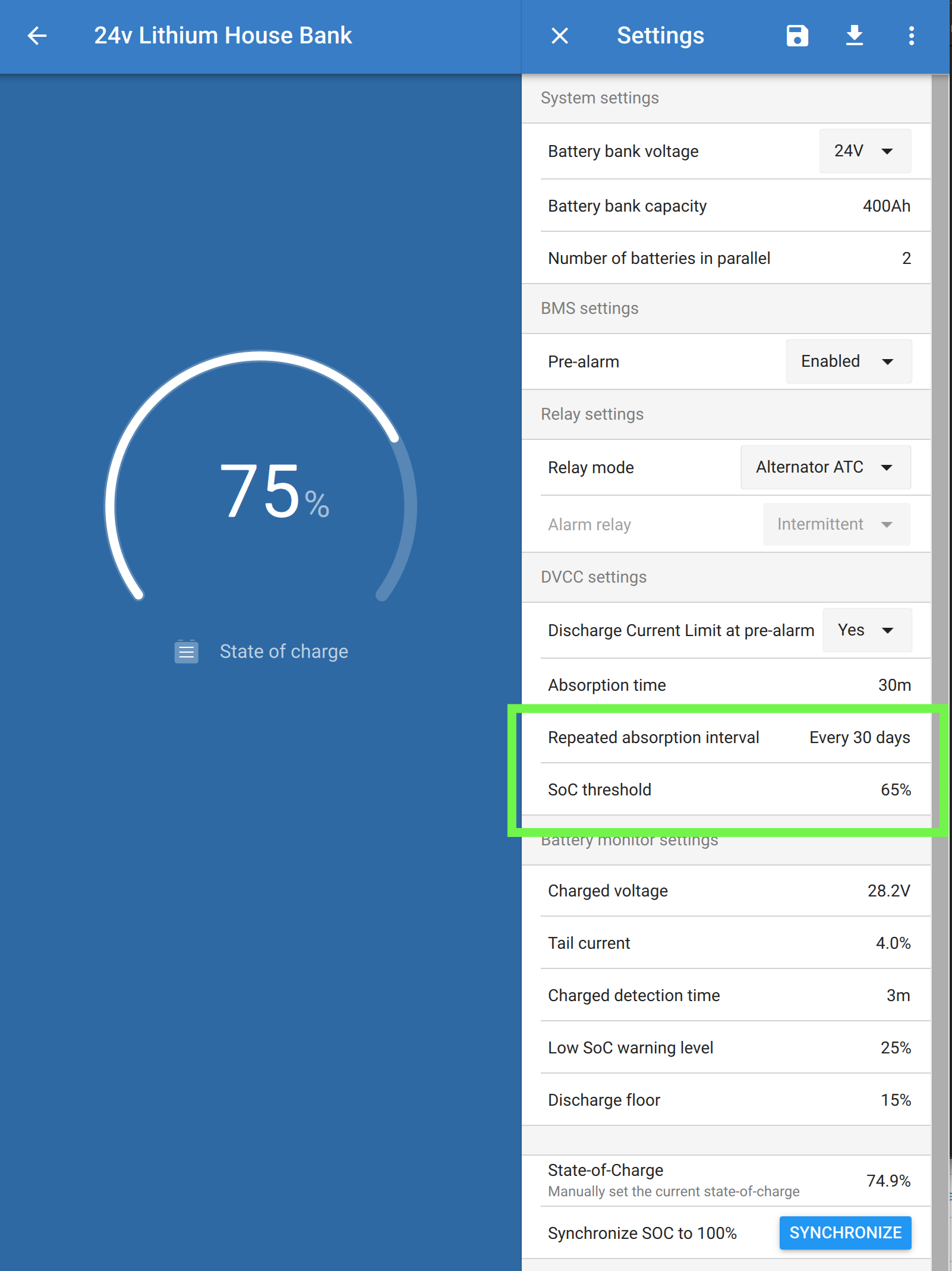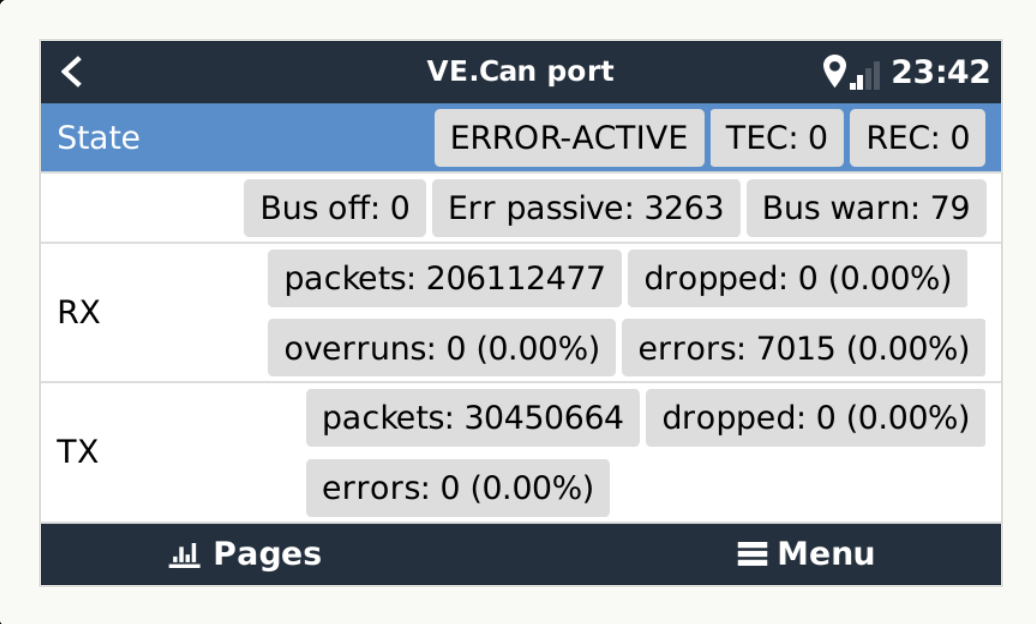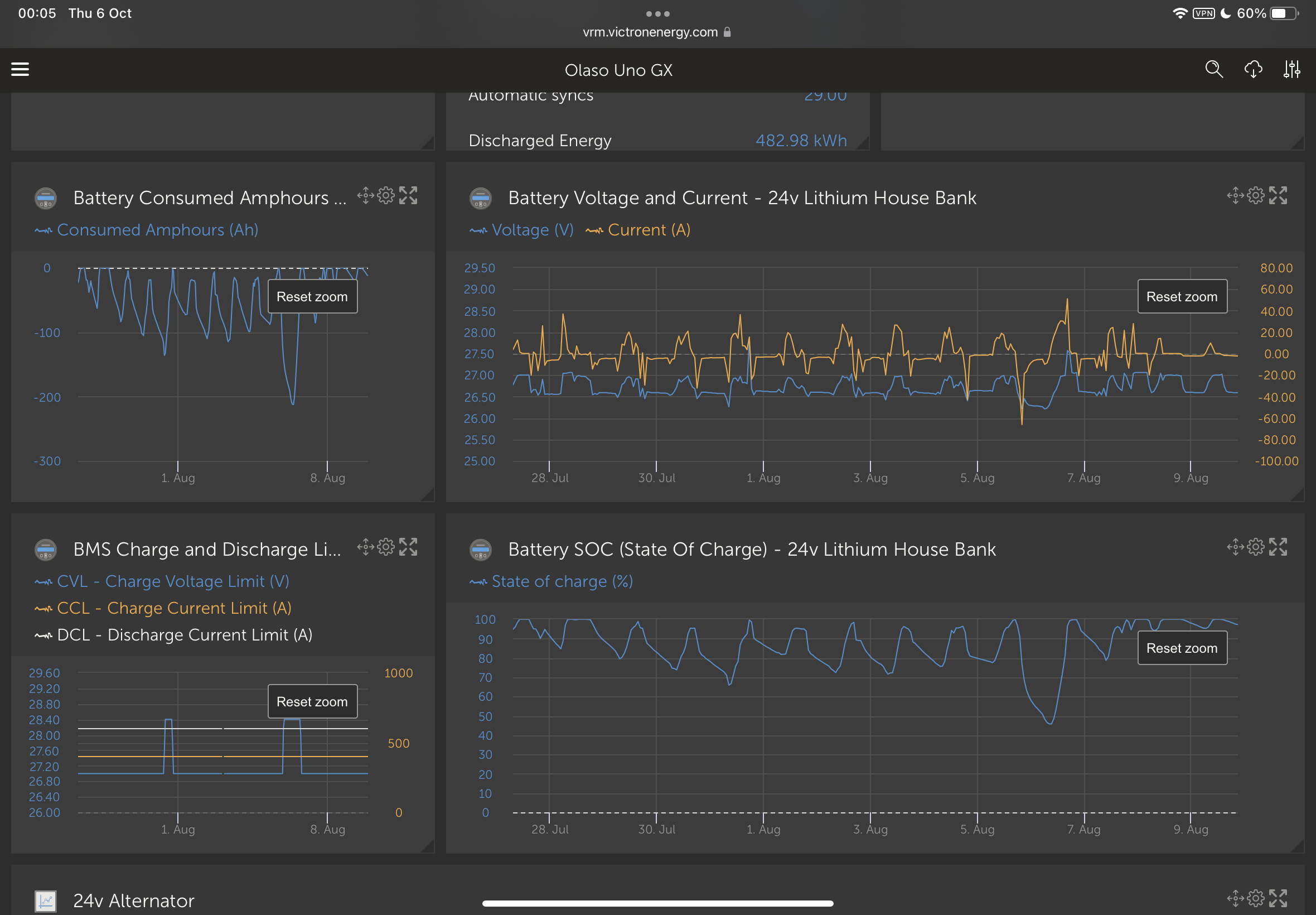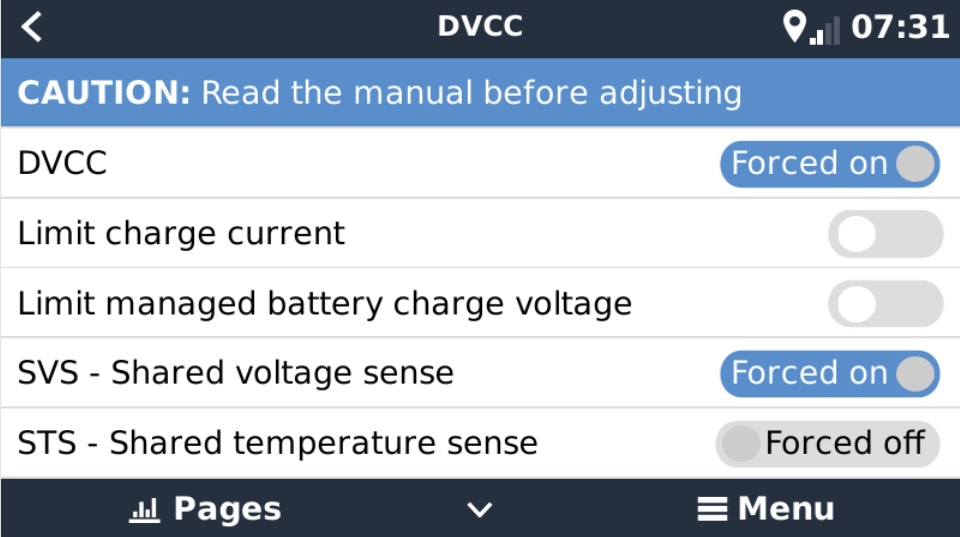Hello Id be super grateful if there were any ideas on the below.
We are in a very remote part of the south pacific with almost no internet bandwith about to leave on a 4000 miles passage in the southern ocean to Cape Horn. I have a bout 10 days to try and get this sorted and downloading firmware if needed would need to be done on a satellite terminal, so any suggestions , ideas or thoughts before we start burning up airtime would be great
The system was working perfectly and now The Lynx BMS is doing some weird stuff and not functioning correctly when it get to 100% and hits Absorption mode.
System setup:
Lynx Smart BMS 500 serial number Hq21232t9qp; firmware V1.04
Set to 24V
realy Mode Alternator ATC
Absorption time 5 min ( this was changed so I could get a better undersatning of hat was happening
(3) 200 ah smart Li for a total of 600ah in 24v
Cerbo GX –firmware 2.90-22
Wakespeed WS500’s Firmware v2.5 and then back to v2.43
There are two wakespeed 500 set ups on the boat. One controlling the high out put 24v alternator on the DC Generator and controlling the 120amp 24V second alternator on the propulsion motor.
Around when I update to WS firmware 2.5 and GX 2.8 for the enhanced features just before I left Panama for the Galapagos I noticed that while charging once the batteries got to100% and at the end of Absorption time the Wakespeed dumped the field and disconnected instead of going into float voltage @ 27.2V as it had been..
The system charges normally or as you would expect it to getting to 100% SOC , At 100% SOC the voltage increases to 28.4 and the amperage drops from 90 Amp or 180 amps depending on the system to <10 amps, as it should. It then sits there for the Absorption period, until it try to go to float.
If I turn off the motor , and then restart it - the BMS /wakespeed will run but at a very slow pace, and a field of no more the 50% with max voltage of 26.8. When loads are turned on , it slowly ramps up and slowly ramps down to compensate. I was convinced it was the WS 2.5 firmware., I got ahold of Al at WS and we spoke about it , he seemed to think it was the BMS and that it sounded like the BMS was putting the WS into get home mode Or safe mode what ever you want to call it . The fact the voltage output was 26.8 and max field of 50% where the key indicators to him. AL sent me 2.43 via email which had worked previously .. I uploaded 2.43 and it continues to do the same thing.
Whats leads me to think it is a BMS issue is If I turn the power off at the Lynx BMS , and reset the system, then start the engine I can charge normally again with the alternator. The field come straight up and does the amperage, until we get to 100% SOC, and finish the absorption cycle , then the problem shows up again.
I then noticed it was doing the same thing with the Smart Solar controller that is networked via the GX device that is being controlled by the BMS. For example if I charge the system with the motor or generator to 95 % SOC and let the solar controller run and toke it to 100% it does the exactly same thing. Once the it gets into absorption it shuts down the solar controller , I see voltage 65 +- but no amperage output (displayed on GX display). If I reset the BMS by cycling power , the solar controller starts charging again .
I have someone traveing to the Gmabier this week and they are bringing another BMS, but I would think this has to be software related as it worked and then all of a sudden it didnt.
I did notice at some point the firmware updated on the Lynx BMS , could that be it ?
Is there any way the cerbo GX firm ware could be causing the problem .
Anyone have any thoughts?







